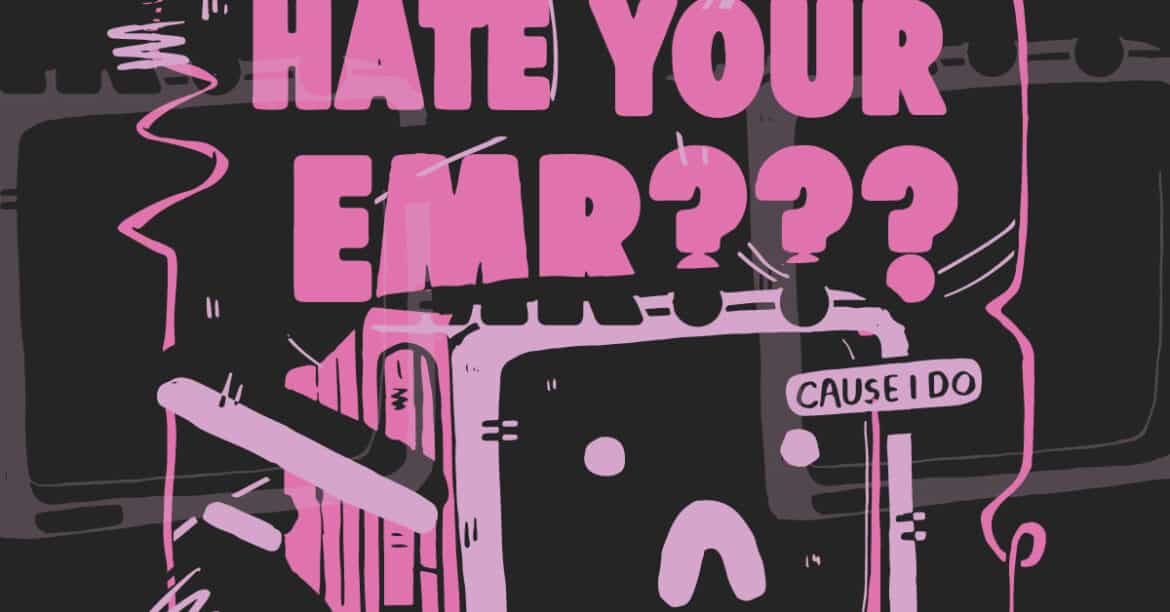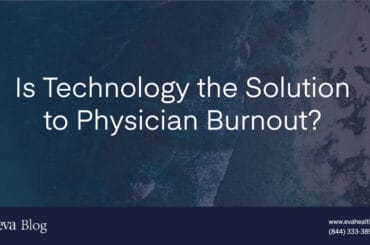And are EHR and EMR the same thing? As a matter of fact, they are not. It’s hard to believe one letter can make such a huge difference but when you consider the differences between EMR and EHR, that one little letter is a big deal. The letters in question are ‘m’ for medical and ‘h’ for health. While these two systems are similar in some ways, the differences between EMR vs EHR are significant.
If you are a physician, practice manager, or administrator trying to decide whether your practice needs an EHR or EMR, it’s important to understand what functionality you need and what technology is available. You should also be aware that there are vast differences across platforms in every category, as well as the fact that most EMRs and EHRs tend to come up terribly short when it comes to providing optimal patient care. We believe in the power of an all-inclusive technology, but more on that later.
What is the definition of EHR and EMR?
EMR stands for Electronic Medical Record. Essentially, electronic medical records (EMRs) are digital versions of paper records in medical practice. An EMR can be as basic as an Excel spreadsheet or offer more robust features, depending on the type of software used. Information is saved on a computer or server in the physician’s office and is in no way connected to the outside world via an internet connection.
EMRs can be used to record, organize, track and analyze a variety of patient data over time, including medical history, prescriptions, drug allergies, recommended dates for preventive screenings, lab results, and so on. The most significant difference between an EMR and EHR is that an EMR is confined within the walls of the individual practice, where EHRs were designed to promote the sharing of information between medical providers as well as patients.
If a physician wants to share a patient’s EMR with a specialist, they would need to print it out and mail it, fax it or provide a copy to the patient to take with them to their specialist visit.
EHR stands for Electronic Health Record. An EHR connects to the world outside and beyond the practitioner’s office. There are a variety of ways and software platforms that can help a medical practice get connected. The purpose of an EHR is to enable the secure sharing of patient information through interconnected technology, where a patient’s health records are allowed to be accessed by parties involved in a patient’s care in order to be updated with relevant information regarding the patient.
A specific programming code called HL7 (Health Level 7) was developed to help different organizations (practitioners, specialists, hospitals, labs, etc.) communicate secure health information via a common language.
For example, with an EHR, a hospital is able to upload information about a patient’s surgery and follow-up plan into the EHR, so the patient’s PCP would know how to support the patient during recovery, what if any medications have been prescribed, and so on. Labs are able to send lab results back in through the EHR, so the PCP knows what health issues may need to be addressed with the patient.
An EHR’s benefits lie in the functionality of integrating efficient coordinated patient care with business operations and service delivery. The EHR safely and effectively stores health information and data, analyzes outcomes, allows for electronic prescribing and electronic communications, provides patient support, and increases the quality of administrative operations.
The EHR also gives patients a greater role in their own healthcare management. The patient can access his/her own medical information, contact their healthcare provider and track their health history, empowering their role in their health.
In simple terms, what’s the difference between EHR and EMR all comes down to technological interconnectivity and functionality. The EMR is basically an isolated electronic medical record. An EHR is an EMR with added functionality and information sharing.
What are the limitations of both systems?
When comparing electronic medical records vs electronic health records, EMR vs EHR, the biggest limitation of the EMR is pretty obvious. The EMR is secluded in a silo, so sharing information for patient care coordination is considerably more challenging than it is with an EHR. EMRs also come up short when it comes to automating and ensuring compliance, hence the growing popularity of EHRs.
Believing technological interconnectivity would help improve efficiencies in the healthcare system, as well as quality of patient care and privacy, the U.S. government enacted the Health Information Technology for Economic and Clinical Health (HITECH) Act in 2009. HITECH was part of the sweeping healthcare reforms included in the American Recovery and Reinvestment Act (ARRA).
Through the HITECH Act, doctors were financially incentivized to purchase EHRs for “meaningful use” in their practices. They were required to meet certain criteria established for “meaningful use” in order to maintain those incentives. HITECH also expanded on privacy and security provisions found in the Health Insurance Portability and Accountability Act of 1996 (HIPAA).
Unfortunately, the vast majority of EHRs were not designed with patient care or physician efficiencies (or profitability) in mind. They were designed for billing purposes with a laser-focused eye on insurance company reimbursements. Instead of making practitioners more efficient, these billing-focused EHRs have buried practitioners in paperwork, resulting in less quality time with patients and worse patient outcomes.
If you’re a practitioner or business manager for a physician’s practice who is searching for the best technological solutions for your practice – there is some good news. Our solution—EVA, your Expert Virtual Assistant—was designed and developed by a medical professionals to truly improve efficiencies (record keeping, compliance, privacy, prescriptions and more) and profitability in the practitioner’s practice, while achieving the supreme goal of optimizing patient care. Eva is a smart medical software that incorprotates all the functionality of an EHR and more …
Pitfalls to avoid when selecting a software
Billing-focused software vs patient-focused software. If you know anything about EVA, you know when we created our smart all-in-one medical software our priority was to enable practitioners to nurture the doctor-patient relationship in order to best serve patients. That relationship is truly the most healing component of patient care! Unfortunately, most traditional EHRs were designed to provide billing context for insurance companies as the primary goal, not optimize the patient’s health.
Traditional EHRs were all built in the business structure of an insurance company environment where insurance issues take the front seat. Because they operate on that premise (insurance reimbursement as the primary goal), practitioners always end up feeling like they are slaves to the insurance company compliance documentation, instead on focusing on patient care. (That’s because they are.)
With EVA, our focus has always been on the patient. EVA was built in-house in a clinical environment with an in-house technology director and master’s degree programmers. Our smart software was designed to optimize patient care by knowing the patient’s story really well—before the patient and practitioner even meet.
EVA is an expert at getting the patient’s story through a conditional patient questionnaire, which is fueled by the latest clinical research and smart technology. EVA even writes patient notes! With the patient’s “story” in hand, the practitioner can spend more time with the patient and decide next steps using EVA’s analysis, along with any additional insight received during the patient visit. We believe it’s more important to know the patient’s story first, not their insurance status.
If you’re looking for a patient-centric all-in-one smart software and a more profitable practice, let’s talk.
EVA, the Expert Virtual Assistant, is powered by smart technology and decades of knowledge and clinical research. Developed within the walls of a physician’s practice (not an insurance company), our smart software is also proven to significantly improve efficiencies and increase profits through a model the puts the patient first.
If you’d like to learn more about EVA or schedule a demo, contact us today!




